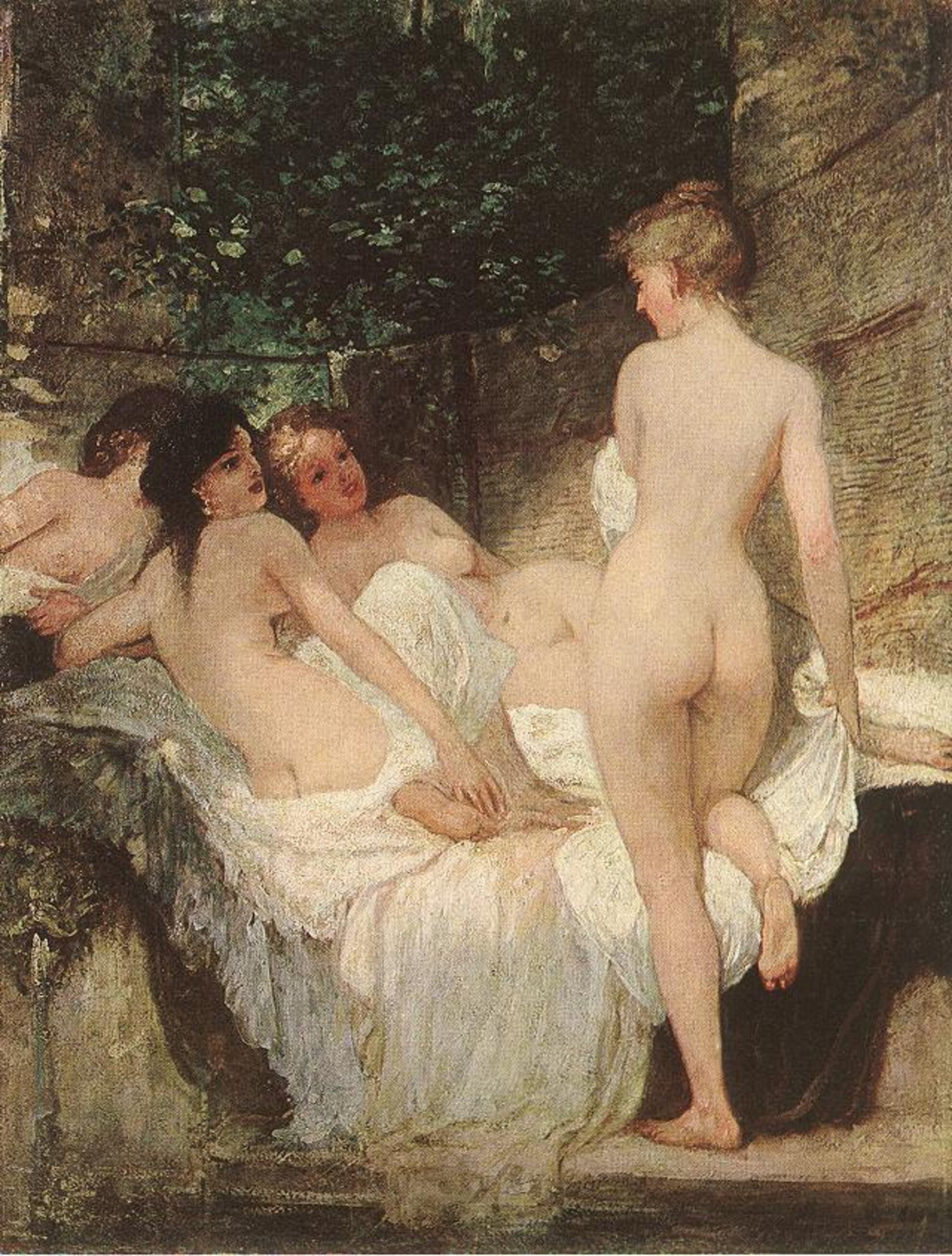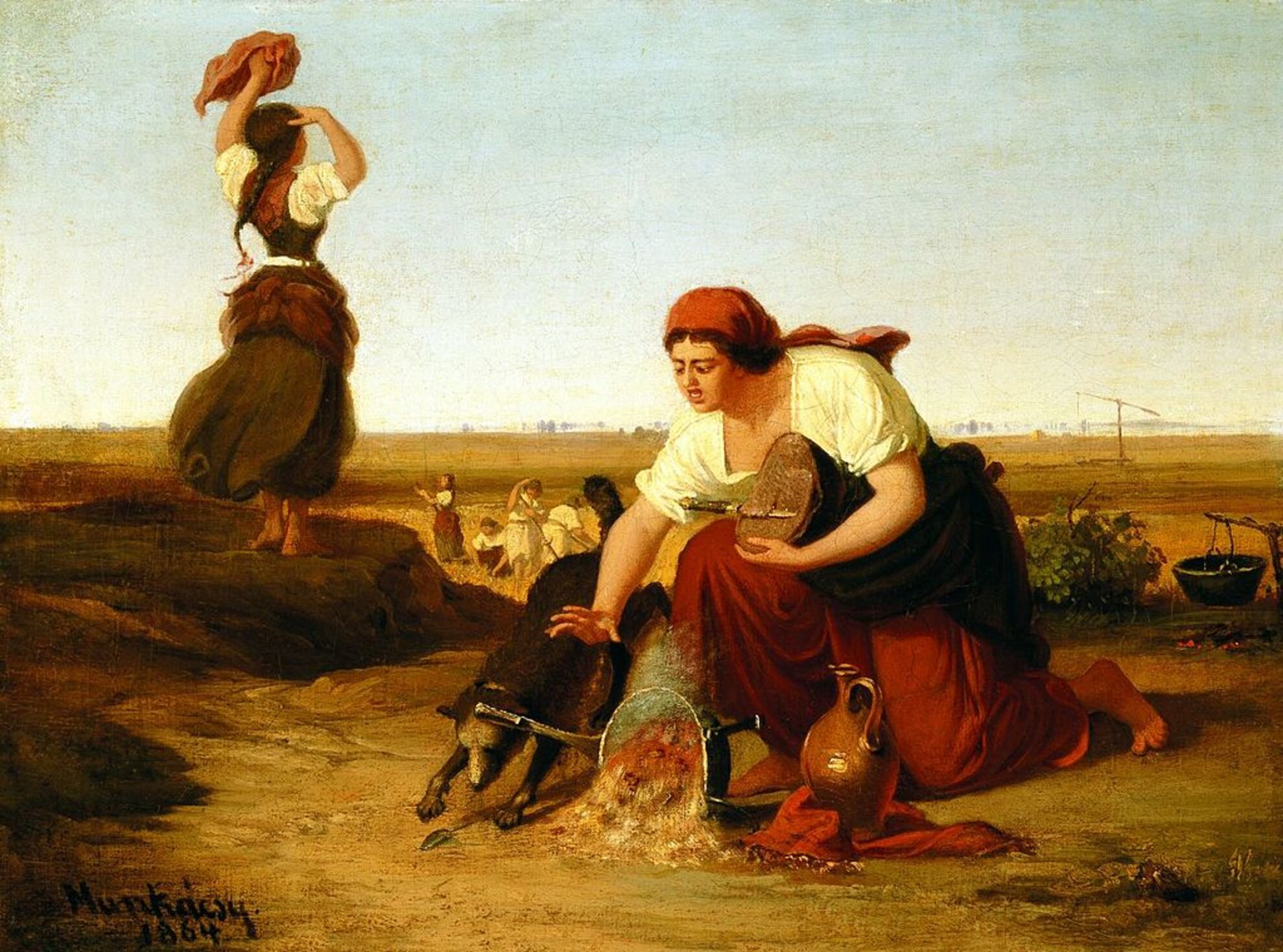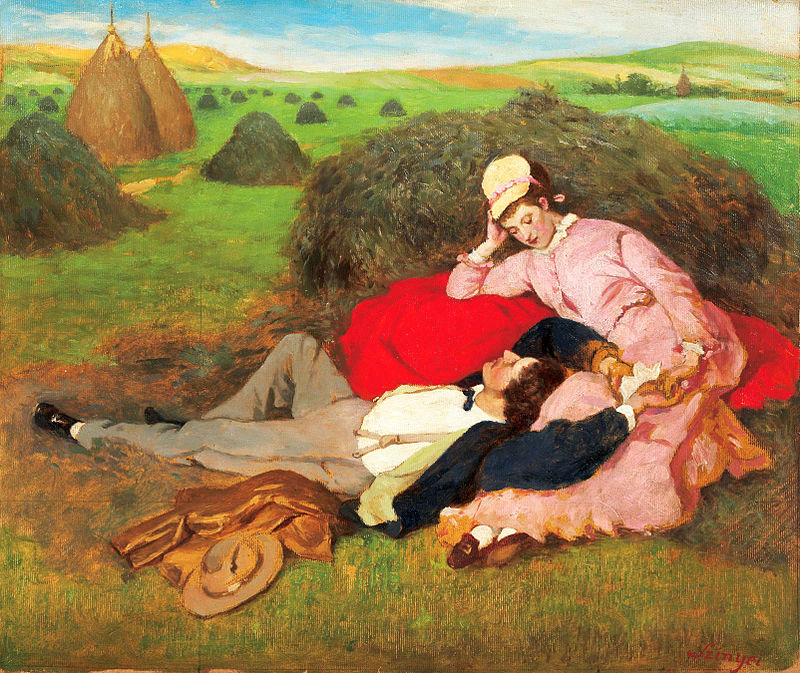Table of Contents
- 1 / 10 - Károly Lotz (1833 - 1904)
- 2 / 10 - Bertalan Székely (1835 - 1910)
- 3 / 10 - Géza Mészöly (1844 - 1887)
- 4 / 10 - Mihály Munkácsy (1844 - 1900)
- 5 / 10 - Pál Szinyei Merse (1845 - 1920)
- 6 / 10 - Tivadar Csontváry Kosztka (1853 - 1919)
- 7 / 10 - József Rippl-Rónai (1861 - 1927)
- 8 / 10 - István Csók (1865 - 1961)
- 9 / 10 - Béla Iványi-Grünwald (1867 - 1940)
- 10 / 10 - János Vaszary (1867 - 1939)

Romantic landscapes of the Great Plains, natural nudes portraying his near and dear ones, and plentiful monumental murals all serve as a record of this German-Hungarian artist’s lifetime, and many of his works still decorate significant buildings of Budapest – including the Hungarian State Opera House, the Hungarian National Museum, St. Stephen’s Basilica, the Parliament House, and Keleti Railway Station, to name a few. Anyone can enjoy his Renaissance-style art while sampling aromatic coffees in Lotz Hall – housing a classic café inside Budapest’s elegant Alexandra Bookstore located on Andrássy Avenue – where the artist’s sophisticated perspective and dynamic composition characterize his gold-framed scenes from Greek mythology. All of Lotz’s upscale commissions and his elaborate style elevated the painter to become one of the most celebrated artists of his time.
Where to see his works in Budapest: Hungarian National Gallery, Hungarian State Opera, Lotz Hall (Alexandra bookstore), Hungarian National Museum, St. Stephen’s Basilica, Keleti Railway Station

Born into a noble Transylvanian family, this painter of Hungarian history and portraits was influenced by Vienna’s Academy of Fine Arts, and a later move to Munich made him an exemplifier of the Romantic and Academic styles. The Escape of Emperor Charles VII landed him an international award, while at a later stage of his career various portraits and nude depictions of female figures were the focal points of his art. It was then that he created one of his most controversial works, Leda and the Swan, a sheer visualization of powerful passion, where Leda is in the role of both the seducer and the seduced, while the swan embodies the male figure as he is passively surrendering to Leda’s enticement. Another notable female portrayal by Székely is the Japanese Woman, a picture presenting an exotic Oriental influence. The artist was not only active on canvas, but was also commissioned to apply decorative murals in Matthias Church, and in the Hungarian State Opera House as well.
Where to see his works in Budapest: Hungarian National Gallery, Hungarian State Opera, Matthias Church

Serene countryside settings and sweeping vistas characterize the artworks of this 19th-century landscape painter, who was passionate about “the Hungarian Sea” (aka Lake Balaton), while many of his meticulously crafted pictures illustrate peaceful panoramic views, showcasing peasants as they went about their daily life. The artist spent a fair amount of time in Hungarian nature from early spring to late autumn, drafting detailed sketches that he fleshed out in his workshop during the frosty winter months. Mészöly embodied the plein air movement, and his images project his exposure to nature and his observations made under the open sky. One of his notable pieces depicts the Lido, an unexpected avant-garde work that vigorously revolves around the unity of three key elements: the earth, water, and air. The master’s art and style had a profound effect on subsequent landscape painters.
Where to see his works in Budapest: Hungarian National Gallery

This widely acclaimed artist created an entire set of realistic representations, and earned international fame by recreating scenes from peasant life, picturing weatherworn landscapes and oversized Biblical displays like the Christ Trilogy, which is on permanent display in Debrecen’s Déri Museum. The Churning Woman – a moving portray of a weary female figure – belongs to his most expressive works, alongside the Woman Carrying Firewood, a folk-themed creation that features a drowsy girl broken down under the heavy load of thin branches on her back; both paintings are exhibited in the Hungarian National Gallery. Although it is not open to the public, the Hungarian Parliament’s Munkácsy Hall houses a great masterpiece, The Settlement of the Magyars in Hungary, while plenty of his other works are proudly displayed across the globe, from Vienna’s Kunsthistorisches Museum to New York’s Albany Museum of Art and History.
Where to see his works in Budapest: Hungarian National Gallery

With effervescent illustrations of the bright outdoors and the use of intense colors, this artist epitomizes the plein air movement. After enduring a lengthy turbulent phase of daunting family issues which nearly ended his career, the artist plunged into his work again thanks to the encouragement of his friends, and went on to create many acclaimed canvases after Emperor Franz Joseph purchased one of his paintings during an exhibition. Although he was rather critical of his own performance, his works were exhibited from Paris to St. Louis to Berlin to Rome during his lifetime. The painter’s masterpieces include the Picnic in May, a cheerful alfresco scene featuring a group of colorfully dressed men and women, while the widely criticized Lady in a Purple Dress stands as another symbolic work of the artist, a fusion of outdoor and studio styles. The Balloon belongs to Szinyei Merse’s most eccentric pieces, where a candy-colored airship dominates canvas and sky. All of these paintings are on view in the Hungarian National Gallery.
Where to see his works in Budapest: Hungarian National Gallery, Kiscelli Museum

As a key representative of the avant-garde movement with his arbitrary post-Impressionist and subjective Expressionist style featuring vivid colors and distorted forms, Csontváry embarked on a journey from Budapest to international fame. A worldwide excursion deeply influenced his later works, and that was materialized in depictions of faraway nations and landscapes on large-scale canvases. His masterpieces include the Lonely Cedar, a windblown tree standing in solitude and dominating the landscape against the washed-up backdrop of sky and sea (the artwork is exhibited in the former Army Headquarters within the Buda Castle until December 31st), or the double-faced Old Fisherman, demonstrating a peaceful elderly man turning into a furious devil by a mirror effect. Although his works are widely known and appraised, during his lifetime Csontváry found little acclaim for his imaginative style.
Where to see his works in Budapest: former Army Headquarters in the Buda Castle until December 31st, 2015; the Hungarian National Gallery

Using rich colors and creating intensive visions, Rippl-Rónai typified the post-Impressionist and Art Nouveau styles in Hungary. Mentored by Mihály Munkácsy, the artist’s early works inevitably bear traces of his master’s style. The painting captioned My Grandmother marks an early success in his career, portraying a pale-faced old lady sitting amid a dimly lit interior, while many remarkable artworks were born during his “black period” – a significant phase of his life when the painter was experimenting with darker shades, including the excessive use of gray and black. Prominent pieces of this era include the Woman with a Birdcage or the Lady with Black Veil – both paintings are dominated by dark hues, with only the subjects’ fair skin tones adding a minimal contrast effect. The aforementioned pieces are showcased in the Hungarian National Gallery in Budapest, while one of Rippl-Rónai’s works, the Woman with Three Girls, is exhibited in New York’s Brooklyn Museum.
Where to see his works in Budapest: Hungarian National Gallery, Virág Judit Gallery

Highly detailed portraits, lively landscapes, and intimate nudes distinguish Csók’s style with vibrant hues and zestful scenes. The painter’s precious pieces were displayed worldwide from Rome to San Francisco to Pittsburgh to London, bagging many trophies internationally, and in Hungary he was granted the government’s Kossuth Prize twice for his cultural contribution to the country. Csók cherished youth and beauty, along with laid-back settings of the Magyar countryside that are widely reflected in many of his paintings: one of his notable works is Gathering Hay, displaying a group of young peasants preparing for lunch amid freshly mown grass, while the Godfather at Breakfast portrays a lighthearted man sitting at a set brunch table with pleasant sights in the background.
Where to see his works in Budapest: Hungarian National Gallery

As a leading member of the Nagybánya artist colony (a school aimed to modernize Hungarian art), various movements influenced the painter’s oeuvre, including French Naturalism, exaggerated Baroque, modern Impressionism, and even experiments with Art Nouveau at a later stage of his life. Many great works line his career with splashes of different hues, shades, and states of mind: The Shepherd and Peasant Woman fascinates the viewer with its melancholic vibe, Drying Clothes reminds us of bright summer days, while the View of Nagybánya with the River Gutin features flat shapes and bolder outlines. One of the main aspects of Iványi-Grünwald’s style is that the subjects are taken from his immediate surroundings, while he depicted the human figure as the integral part of the landscape. In his final years, the painter created plentiful still lifes and Gypsy portraits, although these works did not leave a significant imprint on his legacy.
Where to see his works in Budapest: Hungarian National Gallery

Dynamic strokes, vivid colors, and pulsating lights characterize the works of Vaszary, reflecting several styles like French post-Impressionism, Art Nouveau, and the Nagybánya plein air movement, including a short detour in the direction of folk art. After his studies in Budapest and Paris, Vaszary worked as a war correspondent by actively covering the scenes that surrounded him through visual arts, and this influence is represented in many of his first works, like Soldiers in the Snow or Marching Prisoners. Later he became a teacher at the Academy of Fine Arts, and his experimental nature prompted him to tap into several artistic styles. His main works include the Woman with Black Hat, portraying a young high-class Parisian lady, or the Golden Age, capturing serene, heavenly scenes. As a conclusion of his artistic career, his last pieces embody an entirely different direction, with unconventional depictions made with virtuoso strokes; one of his masterpieces created during this period is the Morphinist, portraying a sleeping woman amid surreal metropolitan vibes.
Where to see his works in Budapest: Hungarian National Gallery, Virág Judit Gallery




